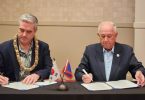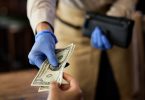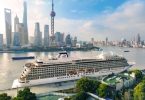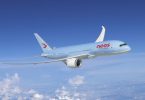David Johnson, deputy director general for the Ministry of Tourism, described the recent launch of the Club Grand Bahama initiative as a shining example that efforts are being made to revamp Grand Bahama as a tourist destination.
Further evidence in support of this was provided by Prime Minister Hubert Ingraham in the House of Assembly last week when he announced that Williams Town has been designated as the site for the development of a proposed $100 million cruise ship port. This venture has been on the drawing board for quite some time, and at one stage it was suggested that it would even have been ready to begin receiving visitors by mid-2009. It is now July of 2009, and obviously that deadline has not been met, but Prime Minister Ingraham has now given assurances that it will happen soon.
The Club Grand Bahama initiative, which is the basis for the optimism expressed by Tourism Deputy Director General Johnson for the island’s tourism revival, is the result of a collaboration between the Ministry of Tourism and the Grand Bahama Island Tourism Promotion Board to create what is being promoted as an experience where travellers can prepay for amenities and enjoy a stress-free vacation without ever opening their wallets.
Clearly, this new initiative and the prospect that a new cruise port for Grand Bahama now appears to be a priority for the Government are good reasons for Grand Bahamians to entertain hope that tourism is about to be revitalized.
But this optimism, to some extent, is not synergetic with the views expressed by Minister of Tourism Vincent Vanderpool-Wallace in his assessment last week of Grand Bahama’s tourism industry.
Commenting on the current anaemic state of tourism in Grand Bahama, Vanderpool-Wallace was direct and to the point when he noted that Grand Bahama is the most expensive near-by tourist destination to get to from the United States. One of the reasons cited for this is the high landing fee airlines are assessed by the Grand Bahama International Airport. Clearly, this is an issue that the decision-makers at the Grand Bahama Port Authority (GBPA) should address to demonstrate that they fully support the efforts being made to revitalize the island’s tourism industry.
Grand Bahamians had high hopes that this would be happening soon when Dublin-based Harcourt Development finalized plans with the government last year to redevelop the Royal Oasis Resort and Casino. Those expectations dissipated, however, when the current worldwide economic crisis resulted in many investors – including Harcourt – placing all future investments on hold.
But even if Harcourt had defied the worldwide trend and moved full speed ahead with its plans, there is evidence to suggest that this would not have resulted in a tourism boom for Grand Bahama. Indeed, the fact that the Our Lucaya Resort has had difficulty attracting guests to fill its rooms – often-times maintaining an occupancy rate of less than 20 percent – strongly suggest that Vanderpool-Wallace was right on target with his assessment of why Grand Bahama’s tourism industry is in such poor shape.
We need to find a way to encourage more airlines to consider including Grand Bahama as a destination, and it should not be the responsibility of the Ministry of Tourism alone to provide incentives for them to want to do so.
A new cruise port and the Club Grand Bahama initiative may help to revive the island’s tourism industry, but addressing the concerns expressed by Vanderpool-Wallace, in our view, is the key to putting vitality back in Grand Bahama’s ailing tourism industry, and it is incumbent on the GBPA to do what it can to assist in this matter.






















